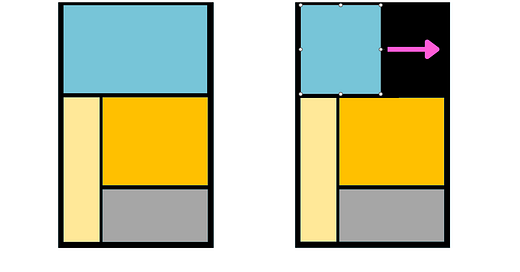1.02 First root problem #1: We don’t know how to enable client’s decisions
Decision taking and enabling others to take (good) decision is one of the most challenging tasks for a project manager. To effectively work with BIM it's a necessity.
Last week, we talked about goal setting. The aspect of goal setting is extremely important in projects and to enable decision-making. This missing ability to foster decisions is even one of the root causes of many problems we have in the industry.
I see a lot of miscommunication between planners and clients. The client expects the planner to support. That’s the reason why the planner got hired. The planner often thinks the client will tell what he has to do and does not ask the right questions. We will see more to this topic in Chapter Step 2: Communication and Collaboration.
In a nutshell, many planners want a streamlined linear process from the first idea to the finished design and often forget that planning is an iterative process.
If the client could describe the requirements upfront, the whole process would be easy, and many planners would lose their jobs. Most clients have wishes, and one of the core jobs of the planner is to transform these wishes into requirements and solutions. The planner must enable the client to make better decisions to do this.
Psychology teaches us that making decisions is difficult because we always miss out on something. Moreover, the mental budget to make decisions is limited. Therefore, it's the planner's core job to help the client decide. That's in the interest of the client and of the planner!
I remember a meeting with an experienced mechanical engineer early on in my career. The client changed the layout all the time, and at the same time, we needed to progress with the design of the high-rise building. We needed to fulfill the need to create more certainty for the client so that he felt comfortable making a decision. In this meeting, we clashed. I was trying
to get the information for the shaft sizes because this significantly impacted the area economy of the whole high-rise building - a prerequisite for the client to make decisions. The planner wanted the exact defined areas and their use in the tower so that he could do the shaft size calculations once - no iterations! We had a conflict of interests and understanding. The client was in an exploration phase to check the feasibility of different solutions, and the mechanical engineer was in the project execution phase, working on one defined solution. At this time, I lacked the skills to moderate the situation, and we continued to design with shaft sizes based on our non-existing experience. The project stopped, so I don't know the results of this suboptimal working relationship. But looking at a few more years of experience on the shafts, I see some of them are positioned in a way that they are not even usable, e.g., facing some staircases.
Enabling early decisions becomes even more critical when working with BIM. Changing a few lines in a CAD plan is straightforward. The more detailed a BIM becomes, the more time-consuming these changes get. Therefore, for any process with BIM, it is essential to make significant decisions early on.
I encourage you to experiment. Install a click counter (e.g. https://www.ilovefreesoftware.com/17/featured/5-mouse-click-counter-windows-10.html) and just record yourself modeling this simple model in the software of your choice.
Please share the results in the comments:
Which Software did you use?
How many clicks did you need?
What could you optimize?
Next week, we will continue with the topic of decision-making and the role of experiments!



